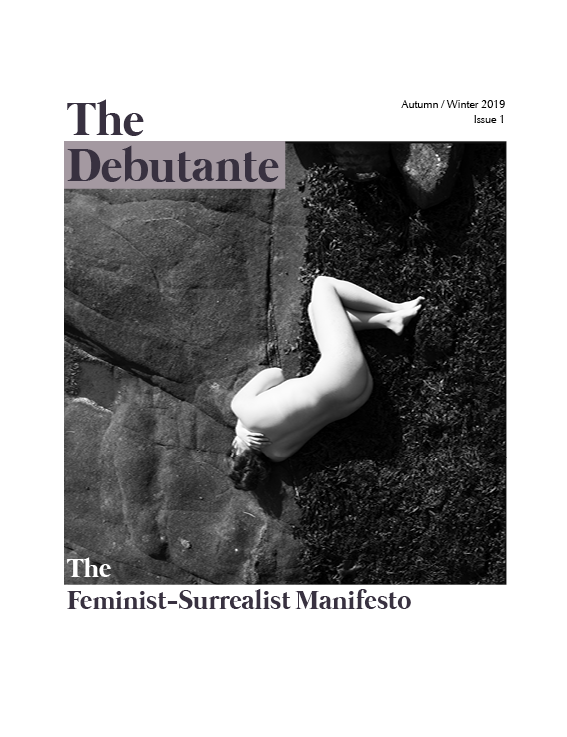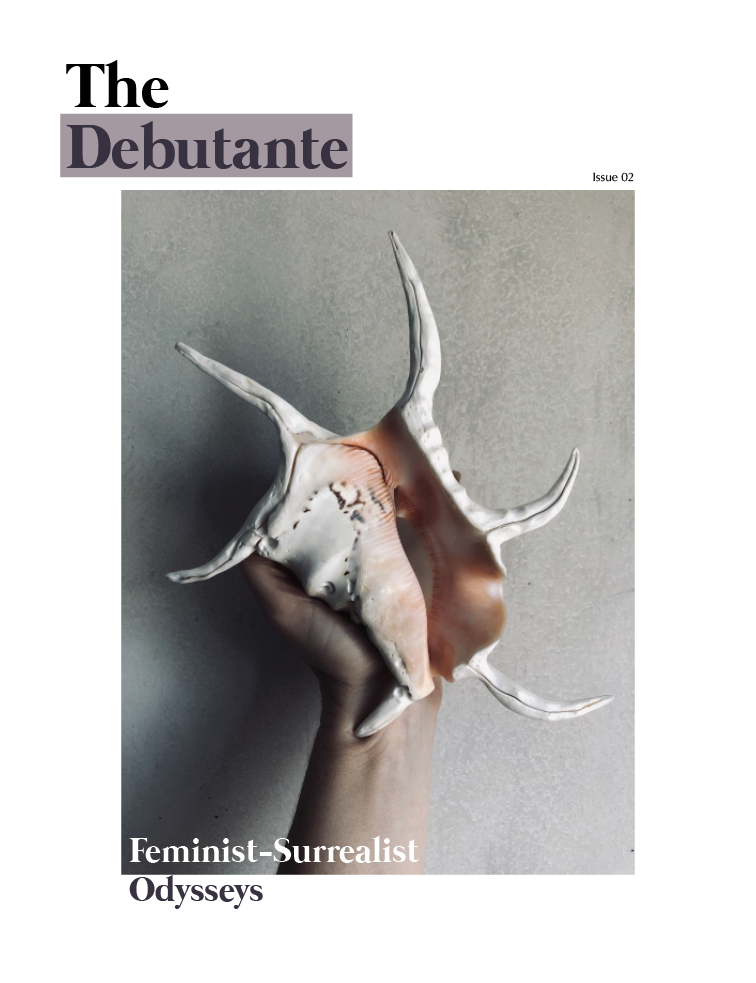Surrealist Women: An Interview with The Debutante
The Debutante is a beautiful journal. It is now on its second issue and it explores both the historical and the contemporary movement of surrealism seeking to promote the lives and work of marginalised surrealists. Having followed the journal for quite awhile I wanted to catch up with its wonderful editors Rachel Ashenden and Molly Gilroy to find out how this all got started.
What attracted you both to the surrealist movement? What was it that excited you?
We both took part in the same course, ‘Surrealism and Its Legacies’ at The University of Edinburgh, led by Dr. Felicity Gee, and we fell in ‘mad love’ with it. Encountering surrealism was a jolt into a world of juxtapositions, contradictions and interdisciplinary cross fertilization and collaboration. Surrealism was prickly; it was both soft and rough to the eyes and to the senses. I don’t think we’d ever encountered a movement which had such a physical effect on us. It felt frantic and it still felt contemporary. We were lucky that we encountered surrealism in a framework which encouraged a global understanding of the movement, not just it’s European politics but it’s journey to America and Japan. Most importantly though, we both found our interests in the works of women surrealists pretty early on, culminating in our dissertations. We felt that there was still work to be in, in terms of redefining the works of artists such as Leonora Carrington, Lee Miller and Dorothea Tanning to name but a few, as artists in their own right, rather than the femme effect or the passive muse. Surrealism was a paradox which was wanted to work through; woman was central to accessing the clairvoyant vision of the male artists, yet simultaneously she was on the periphery of the movement, excluded from signing Andre Breton’s manifesto. We both felt invigorated by the huge body of work, from literature, to poetry, collage and film, which the female surrealist artists produced and the creative kindships forged between them. It was this supportive feminist solidarity which struck a chord with us and our own desire for creative collaboration.
You discuss the manifesto in the first issue of the journal to reclaim it from a feminist perspective. Do you think from a female perspective we are enjoying equality in the art world or is there still work to be done?
There is always work to be done. There is always space for progression in feminist art history. Equality is not a full stop; as art historians and researchers as well as practitioners, whilst looking ahead, we must also look backwards and interrogate the notion of ‘the archive’. What is missing? What has been lost? How has history been ‘curated’ to propel a hegemonic narrative? Museums and galleries still have a long way to go, in terms of redressing their curatorial agenda’s and what is accessible to the public. There have been some great retrospective shows on female surrealists recently; The V&A’s Frida Kahlo ‘Making Herself Up’ (2018) and the TATE’s solo exhibitions on Dorothea Tanning (2019) and Dora Maar (2019) to name but a few at the major galleries in the UK. Yet, travelling and temporary exhibitions have the potential to suggest a transience to the prolonged ‘importance’ of ‘women’s work’, as if they hold fleeting intrigue to the public. We need their work in the permanent collections, which is something that the Scottish National Galleries of Modern Art are striving to achieve with their recent acquisitions of Carrington and Tanning. We also need to move away from a language of ‘women’s work’.
The Debutante is a fantastic story written by the very brilliant Leonora Carrington. Can you tell me a bit about why this name inspired you to use it as your journal?
We began working on a surrealist blog first, when we both relocated to Scotland. We met and saw the documentary on Penny Slinger, ‘Out of the Shadows’, and were inspired to create something more tactile...that’s when we decided to launch The Debutante. We wanted something in which we could platform other contemporary writers and artists, affiliated, either consciously, or unconsciously with surrealism.
If we could bring back some of our favourite female surrealist artists and place them in our world as we know it now – how do you think they would view it? Would they use it to their advantage (for example social media) or shy away from such things?
We’ve discussed this a lot actually. We’ve been thinking about the trope of masks within surrealism, and how masks have now taken on such a different quality of safety and protection.
Molly: I think that artists such as Leonor Fini would perhaps enjoy Instagram as a way to share her costumes and more ‘performative nature’ and perhaps the ‘collaborative’ nature of Instagram would have appealed to some of the female surrealists. Yet, the ‘curated’ nature of social media would have jarred with surrealism’s notion of automatism and the moments of beautiful ‘chance’ which occur.
Rachel: My favourite surrealist has never been regarded as a surrealist in her own right. She went by the name of Nadja, and was a force to be reckoned with. Her feminist-surrealist legacy lives on in spite of attempts to dissimulate her drawings, writings and sayings as a product of mental illness. I am inspired by her brazenness and resilience. If she were here today, I think she would’ve put up a pretty good fight, through her art, in the face of populism.
As a lover of surrealism, I have often been told that it's an art movement that is pointless because none of it makes sense or that is it a thing of the past. What would you say to these people?
Surrealism is very much alive and kicking. Although the movement has ‘officially’ ended, its political legacy lives on. Indeed, it’s important to remember that surrealism is much more than a mere aesthetic. It is so exciting to see young contemporary artists who have turned to surrealism, such as Julie Curtis, Rachel Goodyear and of course, Penny Slinger to address topics on ecology, haptic touch and spiritualism. This is what makes Surrealism such an invigorating art movement; it is contemporary and it is responsive, There will always be a need for surrealism, as a methodology for artists to work through and within. We can see now that there has been an increased proliferation of work by Afro-Surrealists, after D Scott Miller’s Manifesto of 2009. The original surrealist manifesto should be reworked through new, intersectional lenses to create something politically radical for our time.
Feminist-Surrealist Odysseys is out now. Tell me more about the ideas behind this and what readers can expect from this issue?
We are incredibly proud of issue 02, especially with it’s international approach which weaves reflections on the women and non-binary surrealists of the period, whilst championing contemporary feminist-surrealist artists. ‘Feminist-Surrealist Odysseys explores the journeys contemporary artists take across borders, seas and inner psychological landscapes to explore their own sur-reality, alongside confronting ecological and transnational crises. For this Issue, unlike Issue 01 ‘The Feminist-Surrealist Manifesto’, we collaborated with an artists to led our international contributors. Dr Kelsey Ashe became our Overseas Editor and she was able to reach out to artists such as LucilleMartin and Jo Darbyshire. We have some wonderful pieces from academics, to writers to visual collage artists and painters. Outside of our print issues, over lockdown, we had launched a series of webinars called ‘MUSES REDEFINED’, whilst hosting an intersectional reading group to open up conversations about decolonising the art historical record of surrealism. We also can’t wait to get back to hosting in-person events.
You can find The Debutante journal and blog HERE



